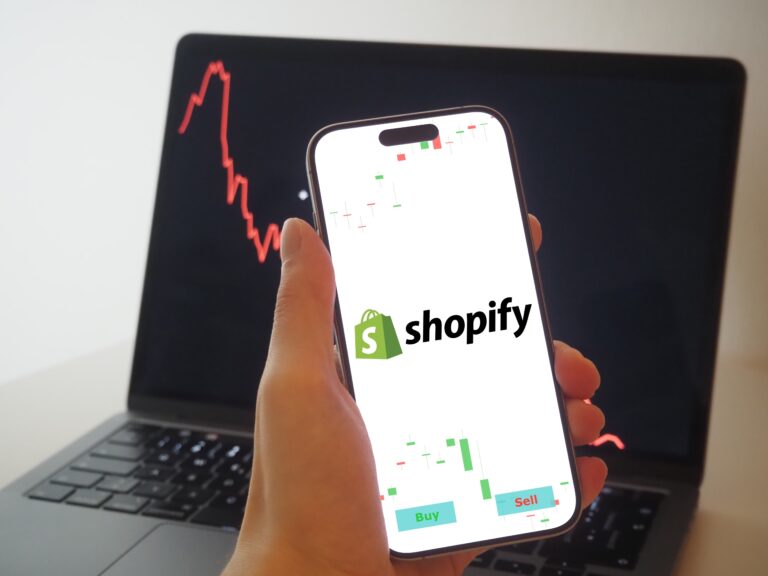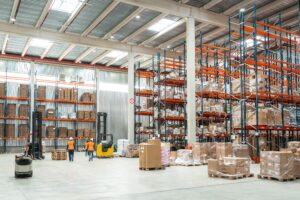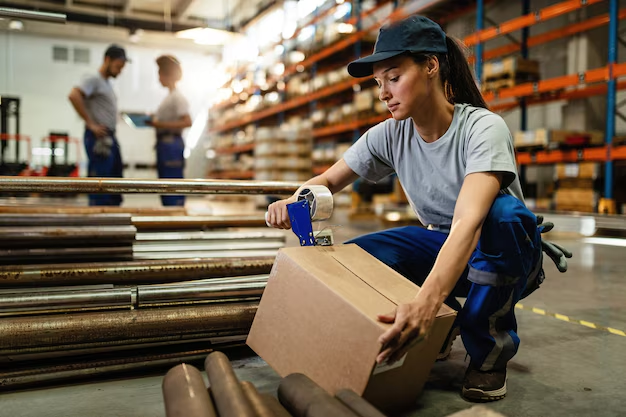If you’re running a Shopify store in the UK, you may have come across terms like “Shopify shipping” and “Shopify fulfilment” and wondered what exactly they mean. While they sound similar, they are not the same thing. In fact, understanding the distinction between the two could make or break your logistics strategy as an eCommerce business owner.
In this guide, we’ll walk you through Shopify shipping vs fulfilment, what each entails, and how they fit into the wider logistics picture. You’ll also learn about fulfilment services for Shopify, including what a UK 3PL provider can offer, how Shopify 3PL integration works, and how to weigh Shopify warehouse costs against DIY shipping.
Whether you’re a small business just starting out your online store, or scaling up fast, this article will help you understand every aspect of Shopify fulfilment explained.
What Is Shopify Shipping?
At its core, Shopify shipping refers to the built-in tools and settings Shopify provides to help you set up, calculate, and manage delivery rates at checkout. It’s not a physical logistics service. Instead, it helps you control how you communicate and charge for shipping.
For example, Shopify shipping UK allows you to display estimated delivery times, print shipping labels, and offer real-time rates from select couriers like Royal Mail, Evri, or DHL. It’s an administrative tool designed to help you manage how orders are sent – not to physically pack or send them.
You’re still responsible for storing, picking, packing, and dispatching each order. This method works well for smaller stores just getting started, or businesses shipping from their own location or a small team.
While Shopify shipping UK is useful, it’s not the same as a fulfilment solution, which brings us to the next section.
What Is Shopify Fulfilment?
When people talk about Shopify fulfilment, they’re referring to the actual logistics process of preparing and sending out orders to customers. This includes inventory storage, picking items, packing them securely, and shipping them through a courier.
Unlike Shopify shipping – which is just the calculation and labelling system – Shopify fulfilment services involve physical action. You can fulfil orders yourself (in-house) or outsource to a third-party logistics provider (3PL). This is what’s commonly known as outsourced Shopify fulfilment.
Outsourcing is especially helpful for fast-growing stores or sellers who want to focus on the marketing and product development of growing your business, rather than logistics. A UK 3PL provider will handle all the heavy lifting behind the scenes, integrating directly with your Shopify store to automatically fulfil incoming orders.
This type of setup is what makes Shopify 3PL integration so powerful. Orders are automatically passed from your Shopify backend to the warehouse team, reducing admin time and improving speed and accuracy.
The Key Differences Between Shopify Shipping and Fulfilment
At this point, it should be clear that Shopify shipping vs fulfilment are two very different things. Shopify shipping is the digital side: shipping options, checkout rates, customer notifications, and label printing. Shopify fulfilment is the physical process of getting the product to your customer.
Here’s an analogy: if your Shopify store was a kitchen, Shopify shipping would be the recipe and oven timer. Fulfilment would be the actual act of cooking the meal and delivering it to the table.
This distinction is particularly important in the UK, where eCommerce customers expect fast, delivery options with easy-to-follow tracking information. If you’re managing everything alone, Shopify shipping tools might be enough at first. But if your store grows, the need for Shopify fulfilment services becomes clear.
Benefits of Using Fulfilment Services for Shopify
Switching from in-house packing to outsourced Shopify fulfilment can feel like a big leap, but for many UK-based Shopify sellers, it’s the turning point that enables real, sustainable growth.
Faster and More Reliable Shopify Order Fulfilment
One of the most immediate advantages of using a fulfilment service is speed. Fulfilment companies operate from purpose-built warehouses in strategic locations to dispatch orders quickly and accurately. Most offer same-day or next-day dispatch, depending on when an order is placed.
This matters because today’s eCommerce customers expect fast delivery, especially in the UK, where next-day shipping is often seen as standard. With a fulfilment partner, you can meet these expectations without burning yourself out.
Better yet, your orders will be packed consistently and professionally, reducing the risk of damage or delays. This improves your customer experience and reduces the likelihood of returns, a common issue when packing is done in a rush or without the right materials.
In short, by improving your Shopify order fulfilment process through a 3PL, you increase customer trust and improve repeat purchase rates.
Seamless Shopify 3PL Integration Saves You Time
Another major benefit of using fulfilment services for Shopify is the ability to automate your entire post-sale process. Through Shopify 3PL integration, your fulfilment partner connects directly to your store. Orders are automatically passed to the warehouse the moment they’re placed, no manual input required.
This means you no longer need to spend hours each day printing shipping labels, updating tracking numbers, or manually confirming orders have shipped. Your fulfilment provider does it all in the background while you focus on marketing, product development, or customer support.
Most modern UK-based 3PLs offer integrations not just with Shopify, but also with other platforms like TikTok Shop, Amazon, or eBay, allowing for full multichannel logistics with stock syncing in real time.
Flexible, Scalable Storage Without the High Overhead
Running your own fulfilment setup often means renting warehouse space, hiring staff, and managing packaging supplies, all of which come with high upfront and ongoing costs. By contrast, a UK 3PL provider offers pay-as-you-go storage and pick/pack fees. You only pay for the space you actually use.
This is especially useful for growing brands with seasonal demand. For example, you may need more storage during peak gifting seasons (like Christmas or Black Friday), and much less during quieter months. A fulfilment partner can flex with your business needs, something that’s much harder to do when renting your own warehouse.
When comparing Shopify warehouse costs, it’s important to consider the hidden costs of in-house storage: insurance, maintenance, utilities, packaging, and labour. Once you factor these in, outsourcing often proves more cost-effective, especially as you scale.
Fewer Errors and Hassle-Free Returns
Manual fulfilment, especially when rushed or handled solo, can lead to errors: the wrong item, incorrect quantity, missed customisation, or late dispatch. These mistakes frustrate customers and lead to refund requests, poor reviews, or repeat complaints.
A reliable UK 3PL provider uses barcode scanning, inventory tracking, and order verification processes to ensure every parcel is accurate. This significantly reduces the chances of mistakes and keeps your customer service inbox quieter.
Many Shopify fulfilment services also include return management. They’ll handle incoming returns, inspect the items, and update you on inventory status. That means you can offer a smooth returns experience for your customers, a key trust factor in the UK retail space, without the hassle of dealing with every parcel yourself.
What to Look For in a Shopify Fulfilment Partner
Not all fulfilment providers are equal, and when it comes to outsourced Shopify fulfilment, choosing the right partner is crucial.
Look for a team with direct Shopify 3PL integration capabilities, ideally one that offers same-day dispatch, scalable storage, and clear pricing. Ask about their experience with Shopify order fulfilment, particularly in your product category – fragile goods, for example, need special care.
A trustworthy provider should also be transparent about Shopify warehouse costs and offer flexibility in how you store and send goods. This is where a UK 3PL provider really shines: local knowledge, fast shipping times, and fewer customs complications.
If you’re also selling on platforms like TikTok, Amazon or Etsy, look for a fulfilment partner that supports multi-channel integration. That way, your stock levels stay synced, no matter where your customer orders from.
Common Misconceptions About Shopify Fulfilment
A lot of new sellers mistakenly believe that using Shopify means Shopify will ship orders on their behalf. But as we’ve explained, Shopify shipping vs fulfilment are not the same thing. Shopify does not automatically fulfil your orders unless you integrate with a 3PL or use one of their warehouse partners (which are not always available in the UK).
Another common mistake is underestimating the total cost of self-fulfilment. Between packaging, postage, and the cost of your own time, DIY logistics can quickly become expensive. When you factor in Shopify warehouse costs, it’s often more efficient to work with a professional provider, especially as your sales increase.
Final Thoughts: Is Fulfilment Right for Your Shopify Store?
If you’re just starting out and managing a handful of orders each week, Shopify’s shipping tools might be all you need. But once you’re dealing with regular volume – or want to provide a faster, more professional delivery experience – outsourcing fulfilment is a smart move.
With the right UK 3PL provider, you’ll save time, reduce errors, and improve customer satisfaction. A solid Shopify 3PL integration gives you total control without the daily stress of packing boxes.
If you’ve ever wondered about Shopify shipping vs fulfilment, or needed Shopify fulfilment explained in plain English, we hope this guide has clarified the difference, and shown how fulfilment services for Shopify can support your growth.
And when the time comes to outsource, make sure your fulfilment partner understands the UK market, offers transparent pricing, and connects easily to your store.










